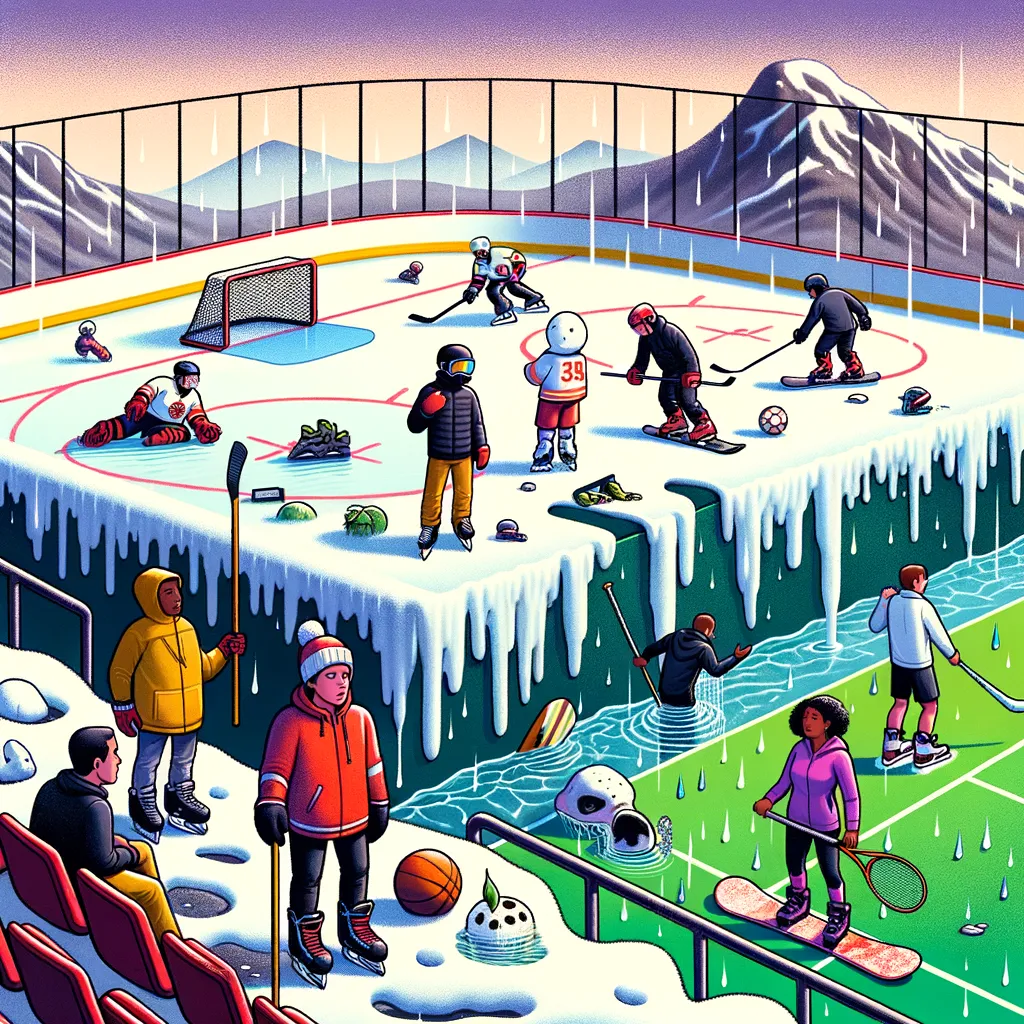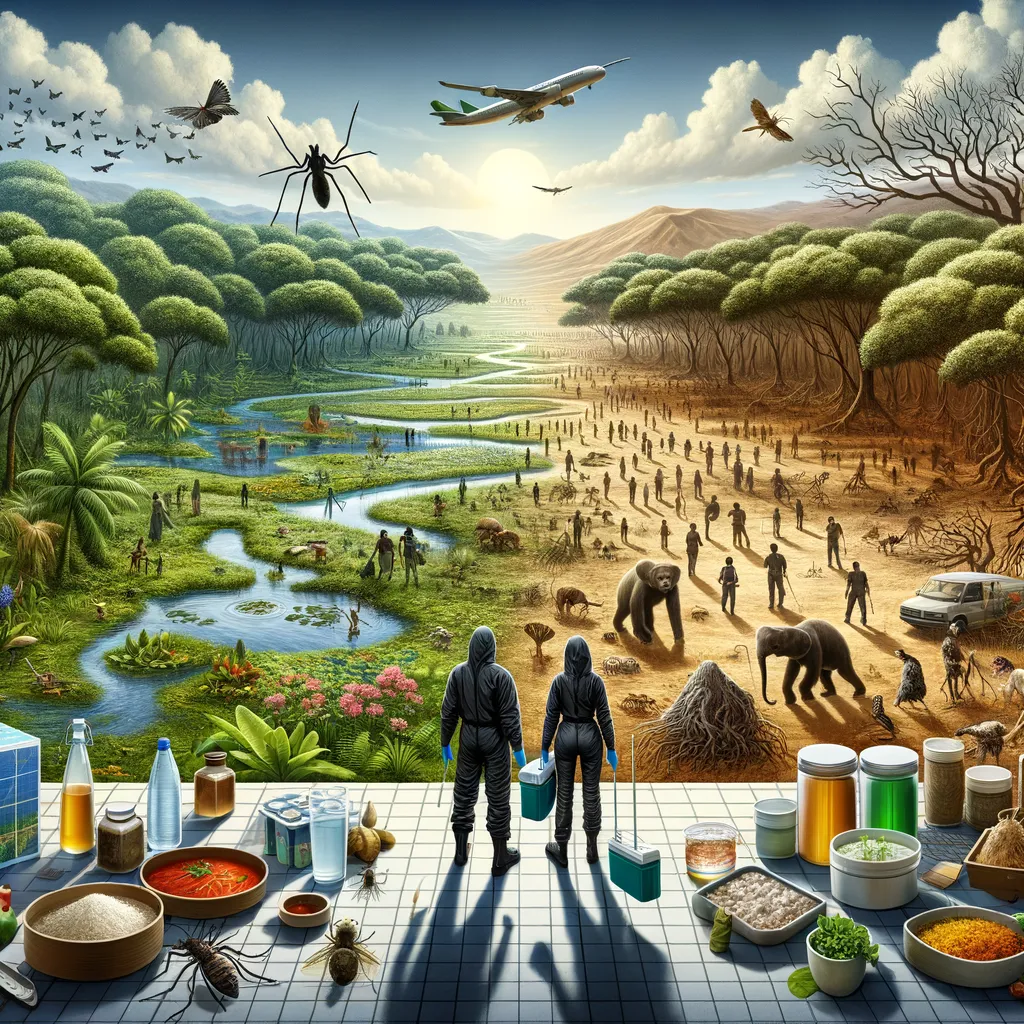**The Impact of Climate Change on Outdoor Sports: A Comprehensive Guide for Parents**
Welcome, dear parents, to your go-to guide on understanding how climate change is reshaping the landscape of outdoor sports, and what it means for your children’s future in athletics and recreation. In a world where the environment is changing at an unprecedented rate, extracurricular activities, particularly those outdoors, are also transforming. This comprehensive guide aims to delve into the intricacies of these changes, offering insights, advice, and proactive steps you can take to ensure your child continues to thrive in their sporting pursuits. Let’s navigate these uncharted waters together with positivity and resilience!
Understanding Climate Change and Its Broad Impacts
Before we dive into the specifics of outdoor sports, let’s lay down a foundation of understanding regarding climate change. Climate change refers to significant changes in global temperatures and weather patterns over time. While climate change is a natural phenomenon, scientific research suggests that human activities, especially those that produce greenhouse gases like CO2, have accelerated this process exponentially. What does this mean for our planet? More extreme weather events, shifting seasons, and fluctuating temperatures can affect every aspect of our lives, including the joy and development we derive from outdoor sports.
How Climate Change Affects Outdoor Sports
The impacts of climate change on outdoor sports can be observed through various angles, from the availability of natural ice for ice hockey and ice skating to the challenges of maintaining natural grass fields for soccer or football. Warmer winters are shortening the seasons for winter sports, while hotter and more unpredictable summers present increased risks of heat-related illnesses in athletes. Additionally, extreme weather events can lead to the cancellation of sporting events and even damage sporting facilities, creating barriers to sports participation and enjoyment.
Winter Sports Meltdown
Winter sports are feeling the heat of climate change quite literally. Activities that rely on cold, snowy conditions, such as skiing, snowboarding, and ice hockey, are under significant threat. With warmer winters, natural snowfall decreases, pushing resorts to use artificial snow, which has its own environmental impact. Furthermore, the shortened seasons limit practice and competition times, challenging athletes’ development and sports infrastructures.
The Rising Mercury’s Impact on Summer Sports
For summer sports, the challenge is the heat. Sports like track and field, football, and soccer face hotter temperatures, leading to heightened risks of heat stroke and dehydration among participants. These conditions not only endanger athletes’ health but also affect their performance and willingness to participate. Moreover, intense heat can deteriorate the condition of sports facilities, making them less safe or, in some cases, unusable.
Shifting the Game Plan: Adapting to New Realities
As daunting as the challenges may seem, the world of outdoor sports is swiftly adapting to these new environmental realities. From innovations in sports technology and infrastructure to changes in training schedules and locations, the global sports community is finding ways to minimize the impact of climate change and ensure that the games go on. Parents, coaches, and young athletes are becoming more aware and educated about environmental sustainability, integrating these practices into their sports and lifestyles.
Adapting sports practices and competitions to suit a changing climate also involves embracing indoor sports facilities that use renewable energy sources, shifting practice times to cooler parts of the day, and promoting sports that require less water and artificial cooling. It’s about being proactive and making informed decisions that not only protect the sports we love but also the planet we call home.
Stay tuned as we explore more about the specific steps parents and young athletes can take to navigate the impacts of climate change on outdoor sports, build resilience, and champion sustainability in athletics. Together, let’s ensure our children can continue to enjoy, excel in, and benefit from outdoor sports in a warming world.

The Impact of Climate Change on Outdoor Sports: A Comprehensive Guide for Parents
Welcome, dear parents, to your go-to guide on understanding how climate change is reshaping the landscape of outdoor sports, and what it means for your children’s future in athletics and recreation. In a world where the environment is changing at an unprecedented rate, extracurricular activities, particularly those outdoors, are also transforming. This comprehensive guide aims to delve into the intricacies of these changes, offering insights, advice, and proactive steps you can take to ensure your child continues to thrive in their sporting pursuits. Let’s navigate these uncharted waters together with positivity and resilience!
Understanding Climate Change and Its Broad Impacts
Before we dive into the specifics of outdoor sports, let’s lay down a foundation of understanding regarding climate change. Climate change refers to significant changes in global temperatures and weather patterns over time. While climate change is a natural phenomenon, scientific research suggests that human activities, especially those that produce greenhouse gases like CO2, have accelerated this process exponentially. What does this mean for our planet? More extreme weather events, shifting seasons, and fluctuating temperatures can affect every aspect of our lives, including the joy and development we derive from outdoor sports.
How Climate Change Affects Outdoor Sports
The impacts of climate change on outdoor sports can be observed through various angles, from the availability of natural ice for ice hockey and ice skating to the challenges of maintaining natural grass fields for soccer or football. Warmer winters are shortening the seasons for winter sports, while hotter and more unpredictable summers present increased risks of heat-related illnesses in athletes. Additionally, extreme weather events can lead to the cancellation of sporting events and even damage sporting facilities, creating barriers to sports participation and enjoyment.
Winter Sports Meltdown
Winter sports are feeling the heat of climate change quite literally. Activities that rely on cold, snowy conditions, such as skiing, snowboarding, and ice hockey, are under significant threat. With warmer winters, natural snowfall decreases, pushing resorts to use artificial snow, which has its own environmental impact. Furthermore, the shortened seasons limit practice and competition times, challenging athletes’ development and sports infrastructures.
The Rising Mercury’s Impact on Summer Sports
For summer sports, the challenge is the heat. Sports like track and field, football, and soccer face hotter temperatures, leading to heightened risks of heat stroke and dehydration among participants. These conditions not only endanger athletes’ health but also affect their performance and willingness to participate. Moreover, intense heat can deteriorate the condition of sports facilities, making them less safe or, in some cases, unusable.
Shifting the Game Plan: Adapting to New Realities
As daunting as the challenges may seem, the world of outdoor sports is swiftly adapting to these new environmental realities. From innovations in sports technology and infrastructure to changes in training schedules and locations, the global sports community is finding ways to minimize the impact of climate change and ensure that the games go on. Parents, coaches, and young athletes are becoming more aware and educated about environmental sustainability, integrating these practices into their sports and lifestyles.
Adapting sports practices and competitions to suit a changing climate also involves embracing indoor sports facilities that use renewable energy sources, shifting practice times to cooler parts of the day, and promoting sports that require less water and artificial cooling. It’s about being proactive and making informed decisions that not only protect the sports we love but also the planet we call home.
Stay tuned as we explore more about the specific steps parents and young athletes can take to navigate the impacts of climate change on outdoor sports, build resilience, and champion sustainability in athletics. Together, let’s ensure our children can continue to enjoy, excel in, and benefit from outdoor sports in a warming world.
Disclaimer
The articles available via our website provide general information only and we strongly urge readers to exercise caution and conduct their own thorough research and fact-checking. The information presented should not be taken as absolute truth, and, to the maximum extent permitted by law, we will not be held liable for any inaccuracies or errors in the content. It is essential for individuals to independently verify and validate the information before making any decisions or taking any actions based on the articles.



